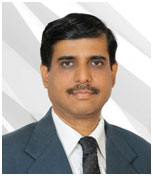
Electricity runs through our homes, office buildings, industrial production units and transportation systems. With growing urbanization and rising electricity demand, global power generation has tripled in the last few decades. As of today, about 60 percent of the power generated in the world comes from fossil fuels, 16 percent from hydro, 11 percent from nuclear, and the rest from renewables such as solar, wind, biomass and geothermal1.
But power generation has a cost. Burning of fossil fuels like coal and natural gas emits carbon dioxide (CO2) that leads to global warming. It is estimated that around 40 percent of the world’s CO2emissions come directly from power generation2 as a result of “heat trapping” in the atmosphere. Therefore, the reduction of these emissions has gained significant importance in recent years.
Below are some possible strategies that regulators and utilities can implement to reduce their carbon footprint:
- Increasing the share of renewables in the power generation mix
- Utilizing energy efficient equipment that optimize power usage
- Deploying smart grids for power distribution and consumption
- Improving Power Quality (PQ) to increase availability and reliability of electrical power and equipment
PQ is as important as power generation. It is a measure of voltage, frequency, and waveform. Simply put, good PQ means steady supply of voltage that stays within the prescribed range, has steady alternate current frequency with zero harmonic distortion, and smooth voltage curve waveform producing zero surges or flickers. Any deviation from this will cause power losses and lead to higher costs, as well as equipment failures and stoppages.
One of the ways to reduce carbon emissions is power factor (PF) improvement. PF gauges power system efficiency. Unity PF equals to one. Meaning, all power generated by a system, say a generator, is converted to active power. Now, if a system is running at a PF of 0.7, we will need to generate 100 kilo-volt amperes (kVA) or apparent power to run a load of 70 kilowatts. This will emit an estimated 95 kilogram (kg) of CO2. But if the PF is improved to unity, we have to generate only 70 kVA that will produce 30 percent less CO2 emissions.
Imagine the amount of CO2 reduction possible if this is applied in a country like India. Even a 10–15 percent PF improvement in the current usage of about 370 gigawatts3 can reduce as much as 33.2 kilo tons of CO2. It would be the equivalent of planting 1.5 million trees.4
Low PF results in voltage drop, current increase, and transmission losses. Technical transmission losses are somewhere between 7 percent and 12 percent. A 20 percent improvement in PF towards unity can also lower transmission losses by 10 percent.
Then there is harmonics – a crucial aspect of PQ. Harmonics are pollutants of electricity, very much like air and water pollutants, that reduce the usability and purity of electric power. The equipment that run on such polluted electricity then malfunction, and seldom breakdown, costing industry owners dearly. It is estimated that another 10 percent power is required to compensate “harmonics issues”. By eliminating them we can directly cut emissions by an equal measure.
In addition, electricity is generated at a three-phase level. When it reaches our homes and industries, however, it caters to single-phase machines. It is a challenge to equally load all three phases at a utility level or the supply side. Therefore, balancing the unbalance is another critical area.

Key takeaways
One of the easiest ways to reduce CO2 emissions from power generation is by improving PQ. This alone would lead to a 12 percent reduction in emissions.
The following are the key PQ issues that can be eliminated by applying the following devices:
- Low power factor: use reactive power compensation devices
- Total harmonic distortion (THD) should ideally be zero. If it is not, use passive (LC) filters or active filters
- Unbalance between three phases: use active power compensators
- Voltage deviations due to surges: use surge capacitors
Sources :
1International Energy Agency (IEA)
2Electricity Generation and Related CO2Emissions
3Government of India, Ministry of Power – Power Sector at a Glance
4U.S. Department of Agriculture – The power of one tree
Shylendra Kumar CM, Vice President, ABB Power Products and Systems India Limited, Bangalore is the Operating Unit Manager – Power Quality Products.
He is an engineering graduate in Electrical and has a Post Graduate Diploma in System Management He has been with ABB since the year 1990 and hasover 20 yrs. of vast experience. He is an expert in the field of Power Quality Solutions / Reactive Power Compensation. He has worked in various roles in Business management, technology, quality and product development.
He served as IEEMA (Indian Electrical & Electronics Manufacturing Association) Chairman – Capacitor Division for 5 years. He is a member of BIS and IEC. He has been very actively participating and delivering technical papers in various international and national seminars/forums in the industry.
